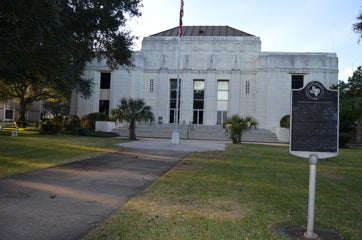JOSIAH NEELEY: Trump tempts ‘Streisand effect’ on climate
Published 12:02 am Wednesday, June 19, 2019
In 2003, singer and actress Barbra Streisand sued photographer Kenneth Adelman to get him to remove photographs he had posted online of her beachfront property. The suit backfired, bigly.
Whereas the image of her property had been downloaded only six times before the suit (two of which were by her attorneys), after the media attention from the suit, Adelman’s website was visited more than 420,000 times in a single month. The incident drew so much attention that it ended up providing the name of what’s known as the Streisand effect: attempts to suppress information resulting in that information being more widely publicized.
Now the Trump administration seems poised to make a similar blunder. Last week, The New York Times reported the head of the U.S. Geological Survey, James Reilly, “has ordered that scientific assessments produced by that office not use projections of the likely effects of climate change beyond the year 2040.” The Times also reports that “worst-case scenario” projections will also no longer be automatically included in the National Climate Assessment, an interagency report on climate change that is issued every four years.
It’s easy to imagine the thought process that led to this action. When the last National Climate Assessment was released in 2018, it proved an embarrassment to the administration. The report concluded that “in the absence of more significant global mitigation efforts, climate change is projected to impose substantial damages on the U.S. economy, human health and the environment.”
Administration officials tried to bury the document by releasing it on the day after Thanksgiving. It didn’t work. Numerous media reports highlighted the apparent inconsistencies between the projections laid out in the report and the policies of the administration. No doubt some in the administration have reasoned that they can avoid similar headlines by not including uncomfortable findings in the report.
Failing to consider worst-case scenarios or projections past 2040, however, will not make that information disappear. The projections are already available from a wide variety of respected sources, and leaving them out of the official assessment (assuming this could even be done) would only serve to draw attention to their absence.
More fundamentally, not dealing with worst-case scenarios or long-term costs does not make the risk of those scenarios go away. Imagine if the government decided to deal with the long-term insolvency of Social Security and Medicare by not taking into account long-term projections about their fiscal sustainability. Should Americans find that reassuring?
The proper way to deal with risk is not to bury one’s head in the sand but to take full account of what we know so that we can develop the best response.
Republicans in Congress are taking a different approach from that of the administration. Instead of following a “see-no-evil” strategy, various conservative House and Senate members are putting forth their own proposals to deal with the issue. Countering the Democrat-led Green New Deal, Rep. Matt Gaetz of Florida has introduced his own resolution calling for a “Green Real Deal.” Tennessee Sen. Lamar Alexander has proposed a “New Manhattan Project for Clean Energy.” And Texas Sen. John Cornyn is preparing a whole suite of climate-related legislation.
As the motto of Faber University states: Knowledge is Good. There are legitimate arguments about the proper response to the risks of climate change, but pretending information about those risks does not exist is not going to work.
•
Josiah Neeley is a senior energy fellow and Texas director at the R Street Institute. He wrote this for InsideSources.com.





